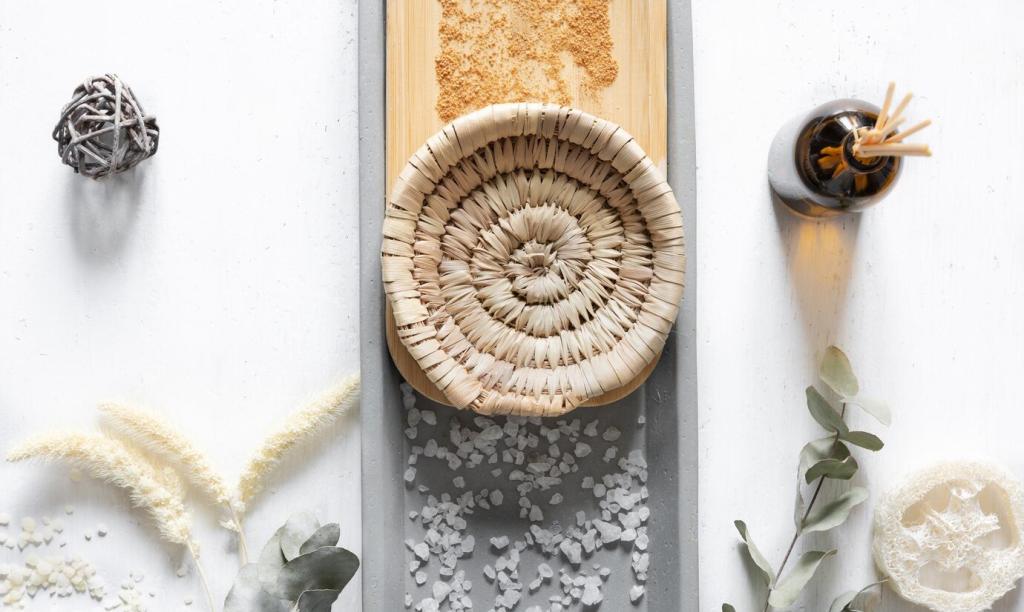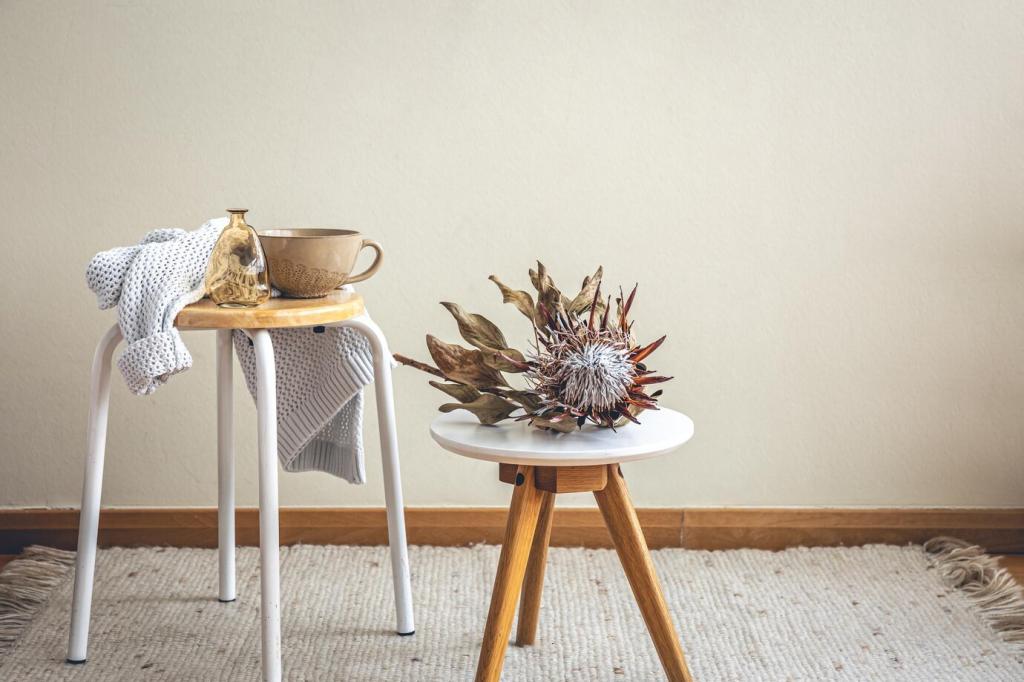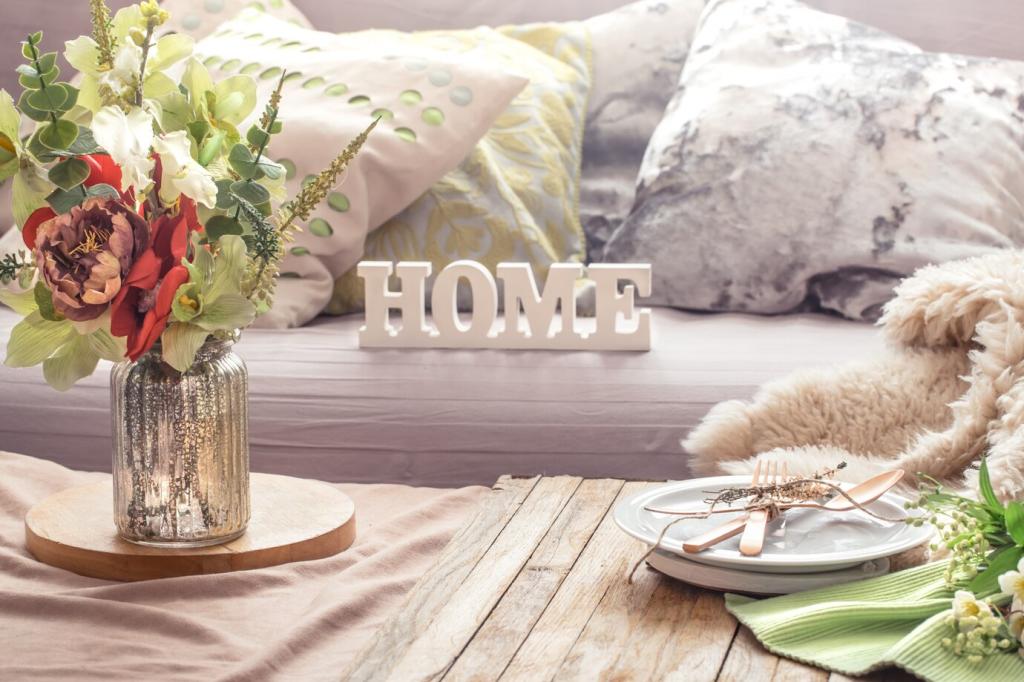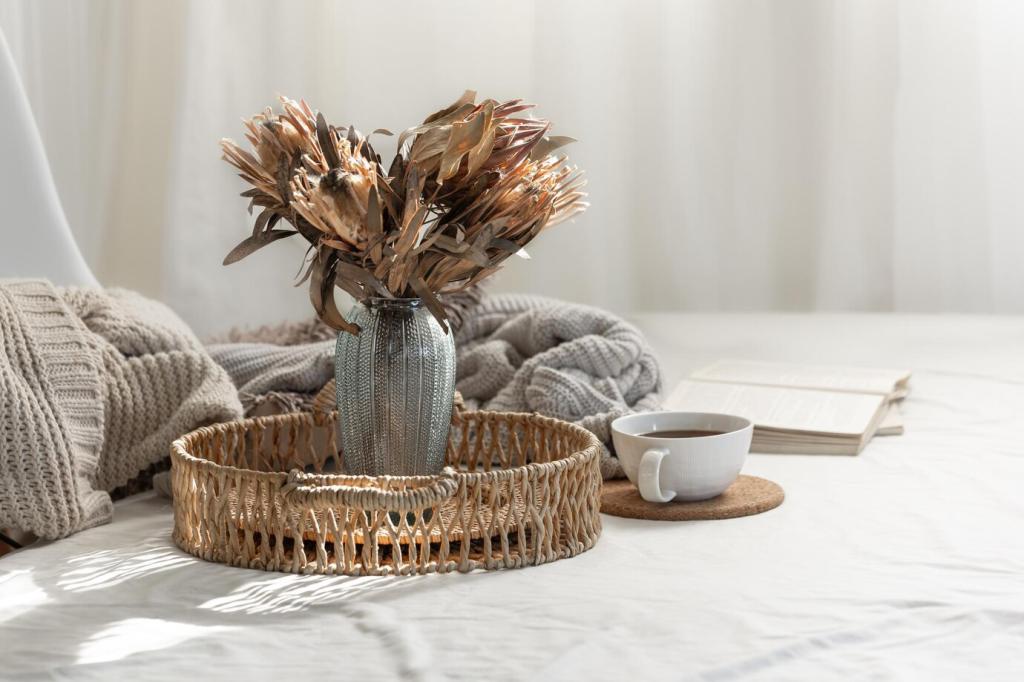Sustainable materials in interior design have become an essential focus for professionals and homeowners alike who want to create healthy, eco-friendly living and working environments. With a growing awareness of environmental challenges and the impact of traditional materials, the industry is evolving to emphasize responsible sourcing, reduced waste, and long-term durability. Using sustainable materials is about more than just style—it’s about making ethical choices that support the health of both people and the planet, while still delivering beautiful, functional interiors. This page explores the nuances of incorporating green materials and how they shape modern interior spaces.

Choosing sustainable materials in interior design plays a significant role in reducing the negative impact of construction and remodeling on the environment. By opting for materials that are renewable, recyclable, and biodegradable, designers can decrease waste sent to landfills and minimize the extraction of non-renewable resources. Such choices also help lower a project’s carbon footprint by reducing energy use in the production and transportation of materials. This mindful approach to material selection actively contributes to resource conservation, supports healthy ecosystems, and helps address the urgent environmental challenges of our time.

The use of sustainable materials is closely linked to improved indoor air quality and overall well-being. Many conventional building and decorating materials release volatile organic compounds (VOCs) and other toxins that can harm health. Sustainable materials, such as low-emitting paints, natural fibers, and untreated woods, contribute to cleaner indoor environments. This focus on health-conscious interiors is especially important for homes, offices, schools, and healthcare spaces, where people spend a significant amount of time. By prioritizing occupant health, sustainable design fosters environments that feel comfortable, safe, and nurturing.

Adopting sustainable materials in interior design is also a reflection of growing social and ethical awareness. Responsible sourcing ensures materials are harvested or produced with respect for both workers and the environment. Ethically managed supply chains prioritize fair labor practices, community empowerment, and support for local economies. As consumers become more conscious of the origins of the products they buy, interior designers have an opportunity to champion values that go beyond aesthetics, fostering spaces that tell a story of care and integrity for people and the planet.
Natural and Renewable Materials

Bamboo stands out as a rapidly renewable resource, renowned for its strength, resilience, and flexibility. Its quick growth cycle—the fastest of any plant used in interiors—makes it an environmentally responsible alternative to traditional hardwoods, which take decades to mature. Bamboo can be employed in myriad applications, from flooring and cabinetry to wall panels and textiles. It is also low-maintenance, naturally pest-resistant, and available in a range of finishes that accommodate diverse design styles. Choosing bamboo supports forest conservation efforts and offers a sleek, modern aesthetic that suits both residential and commercial interiors.
Reclaimed and Recycled Materials

Salvaged Wood
Salvaged wood brings warmth, authenticity, and environmental benefits to interior spaces. Sourced from old buildings, barns, or even riverbeds, each piece carries its unique patina and character, often marked by weathering and use. Using salvaged wood decreases reliance on virgin timber and helps preserve forests. Its inherent strength and longevity make it suitable for floors, beams, cabinetry, or decorative wall claddings. Salvaged wood also supports local craftspeople and businesses dedicated to sustainable practices. The result is interiors brimming with personality and story, all while reducing environmental impact.

Recycled Metal
Recycled metal provides a durable, flexible, and visually striking option for various interior applications. Aluminum, steel, copper, and brass can be melted down and reused without compromising quality. Using recycled metals saves significant amounts of energy compared to producing new metals from ore, significantly reducing greenhouse gas emissions. Recycled metal can be shaped into countertops, furniture frames, decorative elements, or lighting fixtures, offering industrial chic appeal or refined elegance. This material enables designers to blend sustainability with style, delivering robust, high-performing interiors.

Upcycled Glass
Upcycled glass introduces light, pattern, and a sense of innovation to interior design schemes. Discarded bottles, windows, or industrial glass find new purpose as tiles, countertops, decorative panels, and accent pieces. The process of upcycling glass keeps non-biodegradable waste out of landfills and reduces the demand for new raw materials. The transparency and reflective qualities of glass make rooms feel brighter and more spacious, while the variety of colors and textures available enables personalized expression. Upcycled glass demonstrates how sustainable design can be both practical and aesthetically inspiring.
Locally Sourced Materials
Stone from Nearby Quarries
Locally quarried stone offers a sustainable and contextually appropriate choice for interior finishes. Drawing from nearby quarries limits the energy and emissions associated with transport, while also ensuring the material suits the climate and character of the region. Stone can be used for flooring, wall claddings, countertops, and fireplace surrounds, delivering strength and timeless appeal. Its variation in color and texture reflects the unique geology of the area. By choosing local stone, designers create interiors that are not only eco-friendly but also profoundly rooted in their location.
Regional Timber
Regional timber enhances sustainability by minimizing transport costs and supporting responsible forest management practices within the community. Selecting wood from nearby forests helps reduce the embodied energy of materials, making it a preferred option for flooring, millwork, and furniture. Certified sources can ensure that the timber is harvested sustainably, supporting both the health of local ecosystems and the long-term economic vitality of forest-dependent communities. The use of regional timber encourages design that feels naturally integrated into its surroundings, with grains and hues that reflect the local landscape.
Indigenous Artisanal Products
Showcasing local artisanal products—such as handwoven textiles, pottery, or bespoke furniture—infuses interiors with cultural resonance and sustainability. Artisans often use materials native to the region and apply traditional methods passed down through generations. Supporting local crafts reduces the need for mass-produced, shipped goods and preserves valuable skills and heritage. These unique, handcrafted pieces add character and value to an interior, conveying authenticity and a story that honors both the makers and their materials.
Previous
Next
Low-Emission and Non-Toxic Materials
Zero-VOC (volatile organic compound) paints and finishes are formulated to emit little or no toxic fumes, making them an ideal choice for environmentally responsible interiors. Traditional paints often release chemicals that linger long after application, aggravating allergies and respiratory problems. Zero-VOC options use water-based formulations and natural pigments that maintain color vibrancy without health risks. They are available in a growing array of colors and finishes, offering designers and homeowners a safe way to refresh walls, cabinetry, and trim while ensuring superior indoor air quality.
Advanced Insulation Techniques
Effective insulation is vital for maintaining comfortable indoor temperatures while minimizing the energy required for heating and cooling. New sustainable insulation materials—such as cellulose made from recycled paper, wool, and natural fibers—offer excellent thermal performance and reduced environmental impact. These materials are safe to handle, easy to install, and often contain no harmful chemicals. Advanced insulation techniques ensure a tight building envelope, enhancing energy efficiency and comfort year-round. By focusing on insulation, designers help clients save on energy bills while supporting a greener lifestyle.
LED Lighting Solutions
LED lighting is a game-changer for creating energy-efficient interiors without sacrificing quality or design flexibility. LEDs use up to 80% less energy than traditional incandescent bulbs and have a much longer lifespan, reducing both electricity consumption and replacement waste. Versatile in application, LED lights are available in various color temperatures, shapes, and dimmable options, meeting the needs of every design concept. With innovations such as smart controls and tunable lighting, LEDs offer even greater efficiency, making them a staple in modern sustainable interiors.
Smart Home Integration
Integrating smart technology into interiors enhances sustainability by optimizing the use of energy and resources. Smart thermostats, lighting controls, and automated window treatments allow users to customize settings based on occupancy, time of day, or weather conditions. These systems reduce unnecessary energy consumption and help maintain comfortable indoor environments efficiently. Additionally, they provide valuable data that can inform future sustainability improvements. Smart home integration empowers occupants to take an active role in minimizing their environmental footprint through intuitive, connected solutions.
Previous
Next

Celebrating Natural Textures and Colors
Sustainable materials often showcase unique textures and colors that convey authenticity and a sense of connection to nature. Elements like reclaimed wood, natural stone, and undyed fibers highlight natural imperfections, grains, and pigments, bringing warmth and depth to interiors. Embracing these characteristics shifts the focus from perfect uniformity to the beauty of organic variation. Designers can use tactile contrasts and layered natural tones to create spaces that feel inviting, grounded, and visually stimulating, proving that sustainability and aesthetics are inherently compatible.

Contrasts of Old and New
Combining reclaimed or recycled materials with contemporary forms produces striking visual contrasts that enhance the character of an interior. The juxtaposition of weathered wood beams with sleek metal fixtures or vintage tiles alongside modern furnishings reflects a thoughtful approach to design, bridging past and present. These contrasts tell a visual story and contribute to a sense of timelessness, making sustainable interiors uniquely rich and layered. Designers use this interplay to demonstrate that eco-friendly materials can be at the forefront of cutting-edge design.

Expressive Eco-Innovation
Sustainable design inspires a culture of innovation, where materials and techniques are reimagined for modern living. Designers experiment with recycled composites, hempcrete, plant-based polymers, and biophilic design elements to push creative boundaries. These inventive approaches yield new forms, finishes, and functionalities that set interiors apart. Eco-innovation is not just about emerging materials but also about redefining craftsmanship and utility. By embracing experimentation, sustainable interior design continues to evolve, delighting clients with fresh aesthetics and inventive use of resources.
